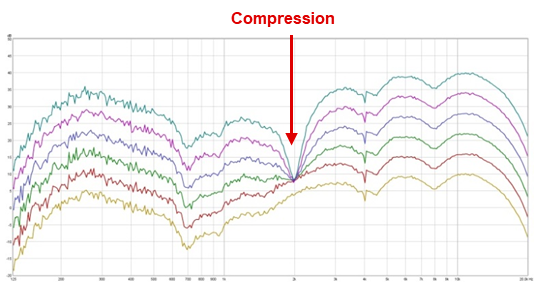SLAA936A September 2020 – March 2021 TAS2563
- Trademarks
- 1Introduction
-
2Quick Tuning Procedure
- 2.1 Initialize Tuning
- 2.2 Flatten Protection
- 2.3 Frequency Response Matching
- 2.4 Microphone Setup
- 2.5 Record Reference Device Response
- 2.6 Set Input Gain
- 2.7 Equalizer
- 2.8 Dynamic Range Compression (DRC)
- 2.9 Smart Amp Protection
- 2.10 Speaker Protection Verification
- 2.11 System Signal Chain
- 2.12 Tuning Elements
- 2.13 PDM MIC
- 3Related Documentation
- 4Revision History
2.12.2.2 Dynamic EQ
Dynamic EQ (DEQ) helps to reduce distortion due to rocking mode/rub-and-buzz, which may occur at a particular frequency by compressing loud signals at that frequency.
The dynamic EQ uses a 128-sample look-ahead, and provides controls for frequency points where dynamic equalization can be activated based on input signal level. Controls for the DEQ include:
- Center frequency(Hz): Sets the center frequency of the DEQ Compressor.
- Q: Sets the band Q-factor to narrow the bandwidth DEQ compression region
- Peak Gain Threshold (dB): Gain Threshold of the limiter below which the gain compressor will be enabled.
- Peak Gain Compression: Compression Ratio in the compression region.
- Peak Limit(dB): Sets the limit of the output signal at the center frequency.
- Peak Alpha (ms): Release time of the DEQ
 Figure 2-16 Dynamic EQ Example (Single Band DEQ at 2 kHz)
Figure 2-16 Dynamic EQ Example (Single Band DEQ at 2 kHz)